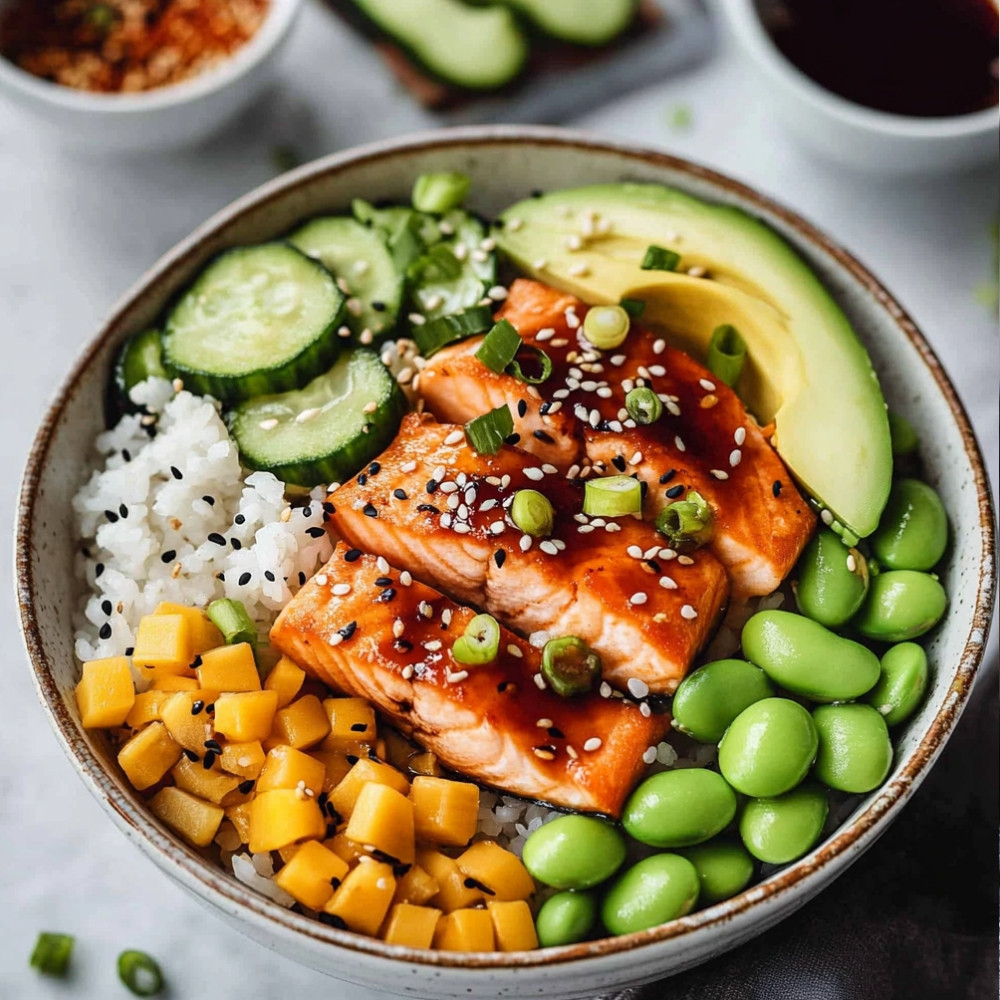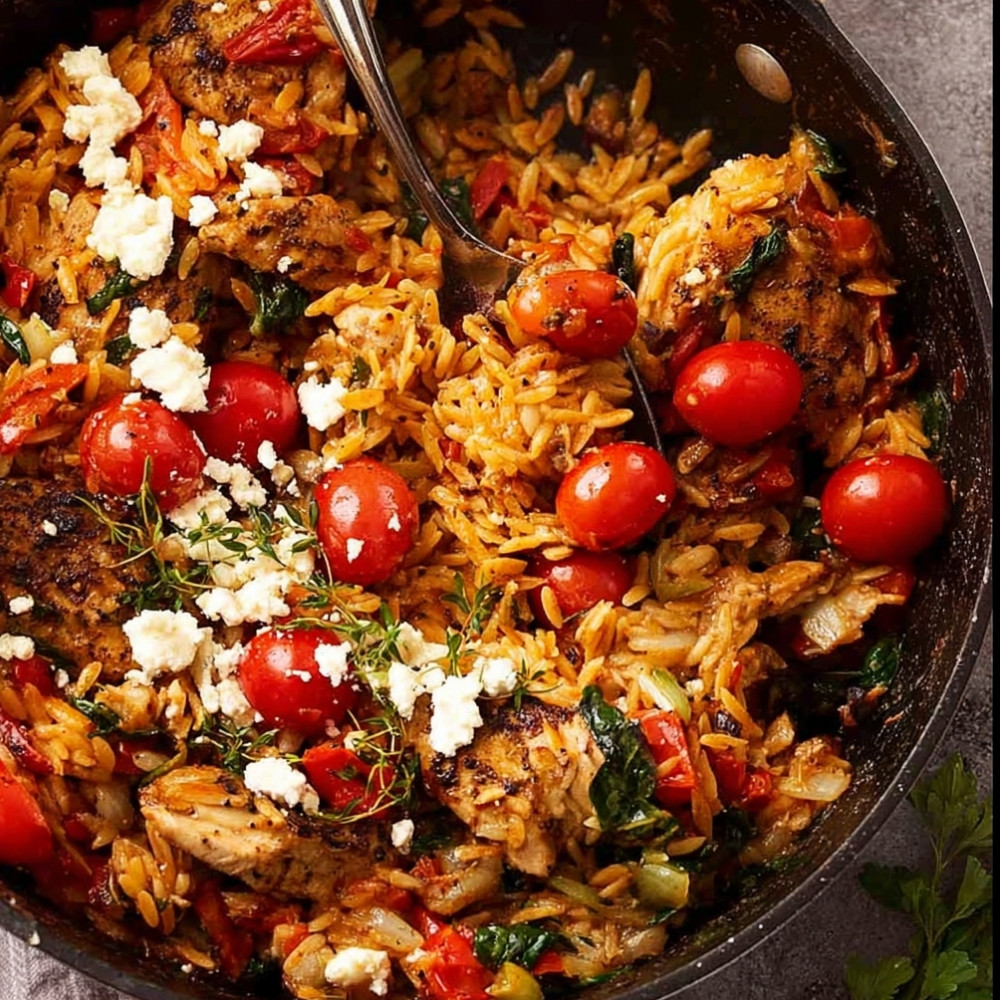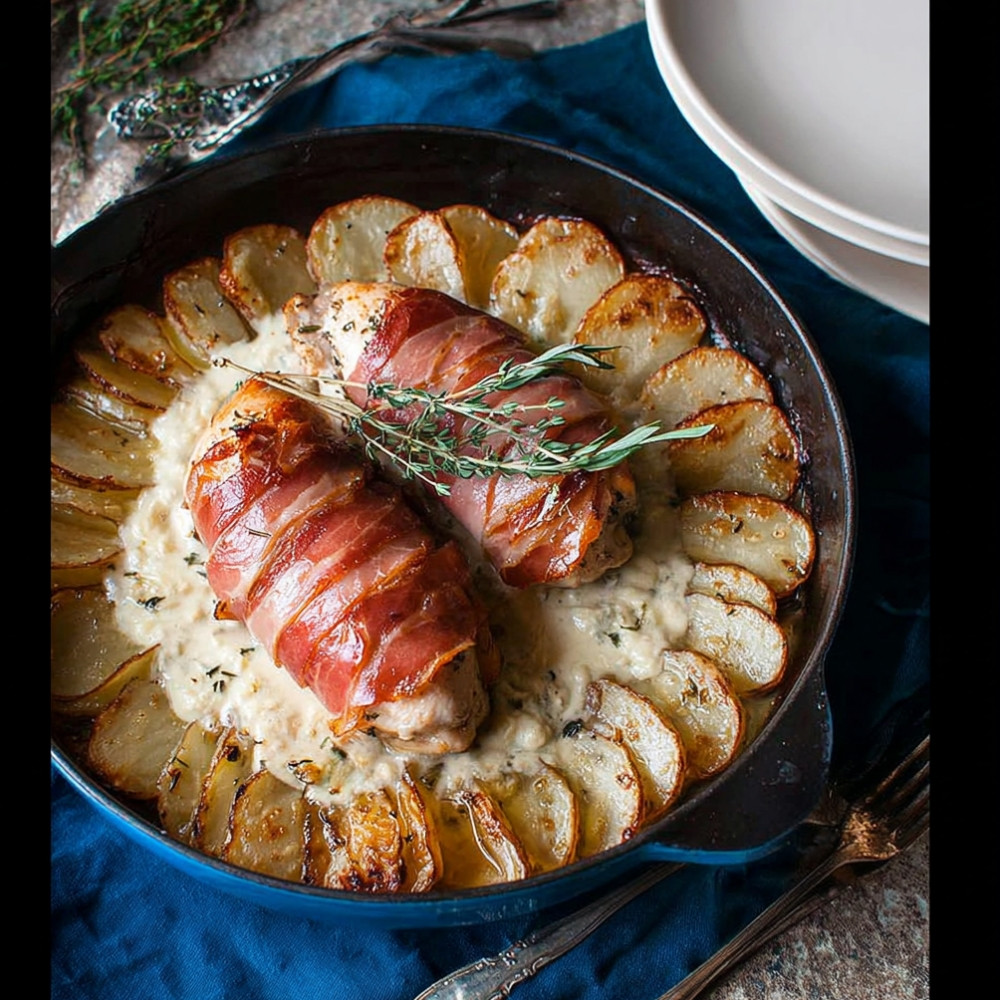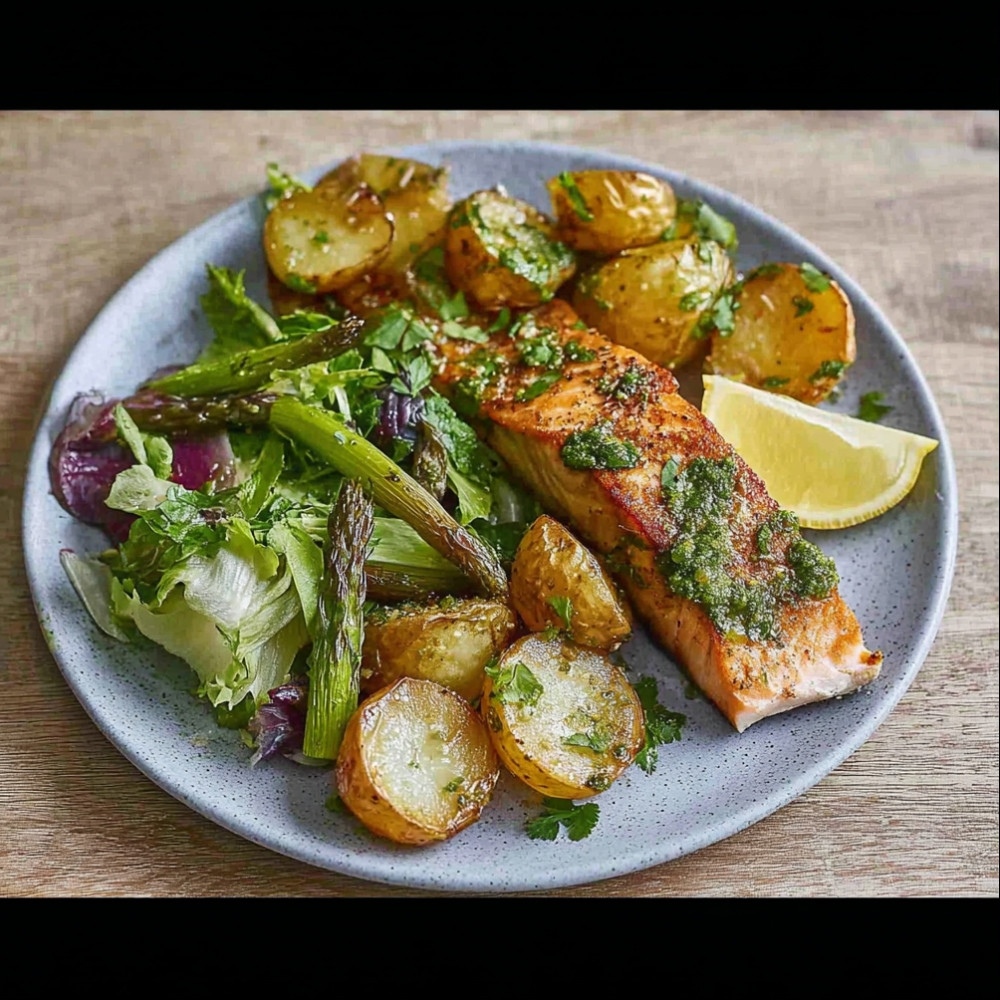Introduction
The salmon bowl is a delicious and nutritious meal that is perfect for lunch or dinner. Packed with protein and healthy fats, this dish combines the rich flavor of salmon with fresh vegetables, grains, and a variety of toppings to create a satisfying and well-balanced meal. Whether you’re looking to impress guests or simply enjoy a healthy home-cooked meal, the salmon bowl is a versatile option that can be tailored to suit different tastes and dietary preferences.
Detailed Ingredients with measures
Salmon Fillet – 1 pound
Brown Rice or Quinoa – 1 cup
Avocado – 1 ripe, sliced
Cucumber – 1, thinly sliced
Carrots – 1 cup, grated
Spinach or Mixed Greens – 2 cups
Soy Sauce – 2 tablespoons
Olive Oil – 1 tablespoon
Lemon Juice – 1 tablespoon
Sesame Seeds – 1 tablespoon
Salt and Pepper – to taste
Prep Time
15 minutes
Cook Time, Total Time, Yield
Cook Time: 20 minutes
Total Time: 35 minutes
Yield: 2 servings
Detailed Directions and Instructions
Prepare the Rice
Rinse 1 cup of sushi rice under cold water until the water runs clear. Combine the rinsed rice with 1 ¼ cups of water in a rice cooker. Cook according to the rice cooker instructions, or bring to a boil on the stove, then reduce heat to low and cover for about 18-20 minutes until the water is absorbed.
Make the Sauce
In a small bowl, whisk together 3 tablespoons of soy sauce, 1 tablespoon of sesame oil, and 1 teaspoon of honey until fully combined. Set aside for later use.
Prepare the Salmon
Preheat your oven to 400°F (200°C). Place the salmon fillets on a baking sheet lined with parchment paper. Brush the fillets with olive oil and season with salt and pepper. Bake the salmon for about 12-15 minutes or until it flakes easily with a fork.
Prepare the Vegetables
While the salmon is baking, slice cucumber, avocado, and radishes thinly. Set aside in separate bowls or a platter for easy assembly.
Assemble the Bowl
In a serving bowl, start with a base of cooked sushi rice. Top with the baked salmon fillet, arranged slices of cucumber, avocado, and radish. Drizzle the sauce over the top of the ingredients.
Garnish
Finish the bowl by adding sesame seeds and nori strips for added flavor and texture. You can also sprinkle some green onions if desired.
Serve
Enjoy the salmon bowl immediately while the salmon is warm and the vegetables are fresh.
Notes
Rice Options
You can substitute sushi rice with brown rice or quinoa for a healthier alternative, but adjust cooking times accordingly.
Salmon Alternatives
If you prefer, you can use skinless, boneless chicken breast or tofu as a protein alternative instead of salmon.
Vegetable Variations
Feel free to add other vegetables such as shredded carrots, steamed broccoli, or edamame for additional nutrients and color.
Storage Tips
Store any leftovers in an airtight container in the refrigerator for up to 2 days. Reheat the salmon gently before serving again.
Cook techniques
Grilling
Grilling salmon enhances its natural flavors and provides a crispy exterior. Make sure to preheat the grill and oil the grates to prevent sticking.
Baking
Baking salmon in the oven allows for even cooking and easy cleanup. Wrap the salmon in foil for a moist result or bake it uncovered for a slightly firmer texture.
Searing
Searing salmon in a hot skillet creates a beautifully caramelized crust. Start skin-side down for the best results and cook it on high heat for a short time.
Poaching
Poaching salmon involves cooking it gently in simmering liquid, which keeps it moist and tender. Use broth or seasoned water for added flavor.
Steaming
Steaming salmon is a healthy cooking method that retains moisture and nutrients. Use a steamer basket over boiling water and cook until flaky.
FAQ
What type of salmon is best for a salmon bowl?
Wild-caught salmon is generally preferred for its flavor and texture, though farmed varieties can also be delicious.
Can I use frozen salmon for this recipe?
Yes, you can use frozen salmon. Just ensure to thaw it completely before cooking to achieve the best results.
How can I tell when the salmon is done cooking?
The salmon is done when it flakes easily with a fork and has an internal temperature of 145°F (63°C).
What can I add to my salmon bowl?
You can add various toppings such as avocado, cucumber, seaweed, or your choice of sauce for additional flavor.
Is this recipe gluten-free?
Yes, the salmon bowl can be made gluten-free by using gluten-free soy sauce or tamari in the recipe.
Conclusion
The salmon bowl is a delightful and nutritious meal option that can be easily customized to suit your taste preferences. With a combination of fresh ingredients, this dish not only provides a burst of flavor but also incorporates essential nutrients, making it a perfect choice for any meal of the day.
More recipes suggestions and combination
Quinoa Salad Bowl
Combine cooked quinoa with chopped cucumbers, cherry tomatoes, and a light lemon vinaigrette for a refreshing salad bowl.
Spicy Tuna Poke Bowl
Use sushi-grade tuna, avocado, and a spicy mayo sauce served over rice for a delicious poke bowl alternative.
Chickpea Buddha Bowl
Mix roasted chickpeas with mixed greens, sliced bell peppers, and tahini dressing for a hearty vegetarian option.
Grilled Chicken Bowl
Replace salmon with grilled chicken, and add roasted vegetables and a garlic yogurt sauce for a satisfying meal.
Stir-Fried tofu Bowl
Sauté tofu with broccoli, carrots, and bell peppers, served over rice with a soy sauce drizzle for an Asian twist.




Leave a Reply